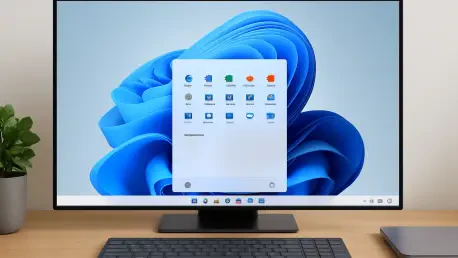In a rapidly evolving digital landscape, where cybersecurity threats loom larger than ever, the integrity of endpoint protection tools is paramount for organizations worldwide. A recent disclosure by a prominent cybersecurity firm has brought to light critical vulnerabilities in a widely used security solution for Windows systems, raising concerns about potential risks even in environments already under attack. This revelation underscores the persistent challenge of securing complex software against sophisticated adversaries who may exploit even the smallest gaps. While the flaws are not remotely exploitable, their impact on system stability and security monitoring capabilities cannot be ignored. As businesses and IT teams grapple with maintaining robust defenses, understanding the nature of these issues, their scope, and the steps taken to address them becomes essential for safeguarding critical infrastructure.
Understanding the Vulnerabilities
Technical Breakdown of the Issues
Delving into the specifics of the disclosed flaws, two medium-severity vulnerabilities have been identified in a key endpoint protection tool for Windows, cataloged as CVE-2025-42701 and CVE-2025-42706. The first flaw arises from a Time-of-Check Time-of-Use (TOCTOU) race condition, a technical issue that could allow attackers with prior access to a system to manipulate files during a brief window of opportunity. Rated at a CVSS 3.1 score of 5.6, this vulnerability poses a moderate risk. The second issue stems from a logic error in origin validation, carrying a slightly higher CVSS score of 6.5. Both vulnerabilities enable unauthorized file deletion on the host system, which could disrupt operations or compromise security mechanisms. Notably, these flaws require existing code execution access on the targeted machine, meaning they cannot be used for initial system breaches but could exacerbate damage in already compromised environments. This technical profile highlights the importance of layered security to prevent initial access by malicious actors.
Potential Impact on Affected Systems
The implications of these vulnerabilities, though constrained by the need for prior system access, are significant for organizations relying on Windows-based endpoint protection. Unauthorized file deletion could lead to system instability, impair software functionality, or even disrupt the security monitoring capabilities of the affected tool. This creates a scenario where attackers, already inside a system, could further degrade defenses or erase critical data, potentially delaying detection and response efforts. Affected versions span a range of releases up to version 7.28, including specific builds across multiple iterations, as well as older Windows 7 and Server 2008 R2 systems running earlier sensor versions. Fortunately, macOS and Linux environments remain untouched by these issues, limiting the scope to Windows hosts. The absence of remote exploitation potential offers some reassurance, but the risk of localized damage in breached systems emphasizes the urgency of addressing these flaws promptly to maintain operational integrity and security posture.
Response and Remediation Efforts
Swift Action and Patch Deployment
In response to the identified vulnerabilities, the cybersecurity firm has demonstrated a proactive stance by swiftly releasing comprehensive patches to mitigate the risks. The latest version, 7.29, fully resolves both issues, while targeted hotfixes have been rolled out for earlier versions, ensuring coverage across a spectrum of affected builds. These updates include specific patches for versions such as 7.28.20008 down to 7.24.19608, as well as a dedicated fix for legacy Windows 7 and Server 2008 R2 systems. This rapid deployment of solutions reflects a commitment to minimizing the window of opportunity for potential exploitation. Additionally, a specialized query has been provided to assist customers in identifying vulnerable hosts within their networks, streamlining the process of applying necessary updates. Continuous monitoring by threat hunting and intelligence teams has confirmed no evidence of exploitation in the wild, offering a layer of confidence as organizations work to secure their environments against these medium-severity flaws.
Commitment to Transparency and Security
Beyond the technical fixes, the approach to handling these vulnerabilities showcases a broader dedication to transparency and customer trust in the cybersecurity domain. The flaws were uncovered through internal security posture management and a robust bug bounty program, highlighting the value of proactive vulnerability discovery. By simultaneously disclosing the issues and releasing patches, the company has aligned with industry best practices aimed at reducing risk exposure. This structured response not only addresses the immediate threat but also reinforces a culture of accountability and rapid action. Customers are strongly encouraged to prioritize upgrades to patched versions to eliminate potential risks, especially in Windows environments where these issues could compound existing breaches. The unaffected status of other operating systems further narrows the focus of remediation efforts, allowing IT teams to concentrate resources on the most critical areas while maintaining vigilance for any signs of malicious activity.
Looking Ahead to Stronger Defenses
Reflecting on the resolution of these medium-severity flaws in a key Windows security tool, the response efforts concluded with effective patches and no detected exploitation in real-world scenarios. The structured handling of the situation, from internal discovery to the deployment of version-specific hotfixes, sets a benchmark for responsible vulnerability management. Organizations were provided with the tools and guidance needed to identify and update vulnerable systems, ensuring minimal disruption. As a forward-looking consideration, IT administrators should establish routine update cycles and leverage provided queries to maintain system integrity. Additionally, adopting a multi-layered security approach can help prevent the initial access required for such vulnerabilities to be exploited. This incident serves as a reminder of the evolving nature of cyber threats and the importance of staying ahead through proactive measures and industry collaboration to fortify defenses against future challenges.









